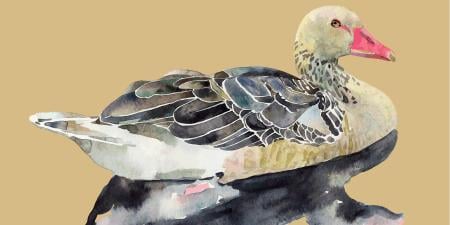Ethics committees are the primary mechanism for dealing with ethical issues in hospitals in the United States today [1-3]. Present in nearly every US hospital, ethics committees were virtually nonexistent in the 1960s and ’70s and, as recently as the early 1980s, were present in only 1 percent of US hospitals [4]. By the late 1980s, however, ethics committee presence had expanded to over 60 percent of US hospitals [5]—a figure that jumped to over 90 percent by the late 1990s [6], when ethics consultation services (a standard function of ethics committees) were present in all US hospitals with 400 beds or more, federal hospitals, and hospitals that are members of the Council of Teaching Hospitals [2].
Why did ethics committees come to be present in nearly all US hospitals in the span of a few short decades, beginning in the 1970s? To answer this question, I will (1) consider the historical emergence of ethics committees in the US, highlighting just a few of the landmark events that contributed to their rise; and (2) glean from these events key underlying features of the need that ethics committees arose to address.
The “God Committee” (1962)
In order to understand the rise of ethics committees in the US, we need to reach back to at least the 1960s when Belding Scribner, at Swedish Hospital in Seattle, made possible dialysis as we know it by building on the work of the Dutch physician Willem Kolff. In the 1940s, Kolff had created the first dialysis machine by modifying an automobile fuel pump to circulate blood outside of the body to be filtered through a series of tubes and then returned back to the body. The problem with Kolff’s device was that each artery and vein could be used only once, giving patients a limited number of opportunities for dialysis. Scribner developed a permanent indwelling shunt with a shut-off valve that allowed for repeated dialyzing through the same sites, thus extending patients’ lives indefinitely [7]. Over time, Scribner recognized this benefit and convinced hospital administrators to establish 17 outpatient dialysis slots in a long-term “Artificial Kidney Center” [7]. As word of Scribner’s breakthrough spread, the number of candidates for dialysis at Swedish Hospital grew dramatically, far outstripping the Artificial Kidney Center’s capacity to provide dialysis for all of them. The stunning success raised a profound ethical question: How should candidates for dialysis be chosen [8]?
To address this question, Scribner appointed an “Admissions and Policy Committee” that was composed of lay people whom he considered to be representative of the community (e.g., a minister, housewife, lawyer, banker, labor leader, and state government official) and a surgeon and charged it with formulating nonmedical criteria for the selection of dialysis candidates [9]. The group considered a candidate’s age, sex, occupation, marital status, education, dependents, income and net worth, past performance and future potential, and references [7, 9]. Scribner’s account of the committee at a major media convention to raise awareness about the dialysis breakthrough became the focus of a front-page article in the New York Times, precipitating a firestorm of controversy. The criteria adopted by the committee soon came to be viewed pejoratively as passing judgment on candidates’ “social worth,” and the committee itself was infamously dubbed the “Seattle God Committee” [10].
How should candidates for dialysis be selected? To Scribner’s credit, he realized that, aside from a few obvious medical exclusion criteria, there was no strictly medical or scientific answer to this question [11]. Indeed, Scribner saw that any answer to the question would be fundamentally value-laden or value-dependent in a way that the question of who needed dialysis was not. While the God Committee was not the first ethics committee as we now conceive of such committees, we can see in the impetus for its creation many key features of the need that ethics committees later emerged to address: technology creating options that formerly seemed unthinkable, value-laden questions that go well beyond what medical science can address, a pluralistic context in which not all involved share the same values, and the need for decisions to be made in a relatively short timeframe.
In re Quinlan (1976)
A host of other very public controversies in the 1960s through the early ’70s helped make health professionals, the general public, and policymakers alike aware of the need for some way to address ethical issues in biomedicine [12-14]. Nevertheless, there is arguably no case that more poignantly illustrated that need than the tragedy of Karen Quinlan [15]. On April 15th, 1975, 21-year-old Karen Quinlan was found unconscious and nonresponsive by friends not long after they helped her to bed. Ms. Quinlan, who suffered from a drug overdose, was transported to Newton Memorial Hospital, placed on a respirator, and later transferred to St. Clare’s Hospital in Denville, New Jersey, where she remained in a vegetative state, fed through a nasogastric tube. After months of hoping against hope, Karen’s parents, Joseph and Julia Quinlan, in consultation with family and their parish priest, came to accept that their daughter was not going to regain consciousness and therefore to believe that she would not want to be kept alive on the respirator. When the Quinlans requested that their daughter be taken off the respirator and allowed to die, hospital administrators and the physicians responsible for her care refused the request on the grounds that to do so would be euthanasia—in their eyes, a form of murder. To be fair, we need to acknowledge that this position was no different from that of the American Medical Association (AMA) at the time and that withdrawing (as opposed to withholding) life-sustaining respirator support was far from standard practice [7].
Appealing to the constitutional right to privacy, the New Jersey Supreme Court ultimately supported the Quinlans’ right to have respirator support withdrawn on their daughter’s behalf. Karen Quinlan’s plight, however, shook the general public in a way that would be hard to overstate. As the philosopher Gregory Pence eloquently put it, together the “invasive feeding tube and the respirator…would come to symbolize an oppressive medical technology, unnaturally prolonging dying” [16]. Like the God Committee, the Quinlan case highlights many of the features of the need that ethics committees emerged to address: technological developments creating options that formerly seemed unthinkable, value-laden questions and decisions that go beyond what medicine or science itself can address, the fact that not all involved share the same values, and the time-pressured need for decisions. Unlike the God Committee, however, the Quinlan case had very broad resonance, as nearly anyone could easily imagine him- or herself in the same position as Joseph, Julia, or Karen Quinlan. The New Jersey Supreme Court, apparently motivated in part by the fear of a torrent of cases that would grind the judicial system to a halt, suggested that “ethics committees” (meaning, albeit, mostly physician-dominated prognosis committees) might play an advisory role in such cases as an alternative to the courts [17].
From Doe Regulations to Ethics Committees (1980-’86)
After Quinlan, additional events spurred the development of ethics committees. The early ’80s witnessed the divide between pro-life and pro-choice views after Roe v. Wade [18] extend into a debate around withholding or withdrawing treatment for severely impaired newborns, resulting in the Baby Doe regulations [19], which required aggressive care for newborns unless such care:
would merely prolong dying, not be effective in ameliorating or correcting all of the infant’s life-threatening conditions, or otherwise be futile in terms of the survival of the infant [20].
By the end of 1984, the American Academy of Pediatrics [21] and the American Hospital Association [22] issued statements supporting the use of interdisciplinary ethics committees as an alternative to governmental investigation in such cases, and the President’s Commission for the Study of Ethical Problems in Medicine and Biomedical and Behavioral Research endorsed the establishment and use of ethics committees in hospital settings in its influential report, Deciding to Forego Life-Sustaining Treatment: A Report on the Ethical, Medical, and Legal Issues in Treatment Decisions [23]. Two years later, the AMA Council on Ethical and Judicial Affairs also supported their use as a way of addressing ethical issues that emerge in clinical settings [24]. In this context [25], the dramatic growth of ethics committees from around 1 percent in the early 80s to over 60 percent of US hospitals by the late 1980s is both remarkable, because of the short timeframe, and understandable, given the growing recognition of the need [4, 5].
The Cruzan Case (1990)
We conclude with the case of Nancy Cruzan, a Missouri woman who had been injured in a car accident in 1983 at the age of 24 and remained in a permanent vegetative state seven years later. Unlike Karen Quinlan, who was kept alive by both a respirator and a feeding tube, Nancy Cruzan was kept alive only by a feeding tube—an example of technological developments creating new dilemmas that, as we have discussed throughout, ethics committees arose to address. Nancy Cruzan’s parents, Joe and Joyce Cruzan, requested that the feeding tube be withdrawn and that she be allowed to die, on the grounds that Nancy would not have wanted it [26]. Opposed by the State of Missouri—in the type of value-laden conflict characteristic of these cases emerging in a pluralistic context—the case made its way to the US Supreme Court and was finally decided in 1990 in the Cruzans’ favor. The legal issue in the initial case was whether the State of Missouri had the right to set the evidentiary standard regarding the wishes of an incompetent patient to have a treatment withdrawn. Missouri had set a “clear and convincing evidence” standard and argued that Joe and Joyce Cruzan had failed to meet it in offering only vague recollections of their daughter’s wishes [7]. The Supreme Court’s subsequent decision, however, recognized that competent patients have a constitutional liberty interest, i.e., a constitutional liberty-based right, to be free of unwanted medical interventions [26].
More than 25 years later, it is easy to forget that the State of Missouri actually won the case, in a decision that was roundly criticized by many bioethicists at the time [27]. In the immediate aftermath, the significance of the decision in furthering patients’ rights was much harder to see because the Supreme Court majority opinion favored Missouri and, therefore, ostensibly left Nancy imprisoned by medical technology. Interestingly, not long after its victory, the State of Missouri claimed to have discovered additional evidence of Nancy Cruzan’s wishes (allegedly, people came forward who knew her by her married name, Nancy Davis, and provided additional evidence of her wishes not be kept alive in these circumstances as Karen Quinlan had been) and moved to have the feeding tube withdrawn [7].
Given the State of Missouri’s victory, why was the Cruzan case a major victory for patients’ rights, and how did it contribute to the rise of ethics committees? As noted above, Cruzan recognized that a competent patient has a constitutional right to be free of unwanted medical interventions [26]. Once competent, but now incompetent, patients, then, also must have such a right, raising the question of how that right might be respected. In her concurring opinion, Justice Sandra Day O’Connor emphasized that the task of crafting protections for the liberty interests of such patients is entrusted to the “laboratory of the states” [28]. Public outcry during and after the Cruzan case led directly to the passage of the Patient Self-Determination Act (PSDA) of 1991, which underscored patients’ rights to direct their care by mandating, among other things, that patients be informed of such rights and offered information about advance directives [29, 30].
For our purposes here, the final push in the emergence of ethics committees in the US came in 1992, when the Joint Commission on the Accreditation of Healthcare Organizations (JCAHO) changed its recommendation that hospitals have some “mechanism” for dealing with ethical issues in clinical care to a requirement [31]. It would appear to be no mere coincidence that the process for initiating this change came on the heels of the very public discussion of the Cruzan decision and the passage of the PSDA. Not surprisingly, the 1990s saw the presence of ethics committees in US hospitals jump from 60 percent to over 90 percent by the end of the decade [6].
Conclusion
These three cases—the God Committee, Quinlan, and Cruzan—all feature the technological developments, value-laden questions, clashes between values in a pluralistic context, and relative time-pressure for decision making that I argue characterize the need that ethics committees came into existence to address—a need that seems unlikely to abate in the foreseeable future.
References
-
Ethics committees typically have a threefold function of education, policy formation or review, and consultation. Aulisio MP. Clinical ethics. I. Development, role, and methodologies. In: Jennings B, ed. Bioethics. Vol. 2. 4th ed. Farmington Hills, MI: Macmillan Reference USA; 2014:596-602.
- Fox E, Myers S, Pearlman RA. Ethics consultation in United States hospitals: a national survey. Am J Bioeth. 2007;7(2):13-25.
-
Aulisio MP. Ethics committees and consultation. In: Post SG, ed. Encylopedia of Bioethics. 3rd ed. New York, NY: Macmillan Reference USA; 2003:841-847.
- Youngner SJ, Jackson DL, Coulton C, Juknialis BW, Smith EM. A national survey of hospital ethics committees. Crit Care Med. 1983;11(11):902-905.
- Fleetwood JE, Arnold RM, Baron RJ. Giving answers or raising questions? The problematic role of institutional ethics committees. J Med Ethics. 1989;15(3):137-142.
- McGee G, Caplan AL, Spanogle JP, Asch DA. A national study of ethics committees. Am J Bioeth. 2001;1(4):60-64.
-
Pence GE. Classic Cases in Medical Ethics: Accounts of Cases That Have Shaped Medical Ethics with Philosophical, Legal, and Historical Backgrounds. 3rd ed. Boston, MA: McGraw-Hill; 2000.
-
During the early and mid-twentieth century, medical science was experiencing a historically unprecedented series of technological advances that created options for medical care and challenges for decision making that were almost unthinkable in earlier times. These advances included successes with antibiotics (e.g., penicillin in the ’40s), vaccinations (e.g., polio in the ’50s), transplantations (e.g., kidney, liver, heart in ’50s and ’60s) and a variety of medical devices (e.g., “iron lung” in the ’20s and ’30s). Advancing medical technology played an important role in the rise of ethics committees [1, 3].
-
Winslow GR. Triage and Justice: The Ethics of Rationing Life-Saving Medical Resources. Berkeley, CA: University of California Press; 1982:13.
-
This ethical dilemma was thrust into public spotlight when Scribner himself tried to raise awareness about his breakthrough and the great need it had created by taking one of his patients with him to address a large media convention in Atlantic City, New Jersey. There he discussed not only the innovation of the permanent indwelling shunt, but also that demand for dialysis was vastly beyond what his center could possibly meet. Given this, it is not surprising that those present pressed him to discuss how candidates for dialysis were selected, and he obliged. Alexander S. They decide who lives, who dies: medical miracle puts a burden on a small committee. Life. 1962;53(19):102-104, 106, 108,110, 115, 117-118, 123-124, 127.
-
Winslow, 13-15.
-
The furor over the “God Committee” had barely subsided when successes in organ transplantation evoked similarly difficult, value-laden questions about the procurement and distribution of the scarce resource of solid organs. Jonsen AR. A Short History of Medical Ethics. New York, NY: Oxford University Press; 2000.
-
In 1967, Christiaan Barnard, a South African surgeon, successfully transplanted a beating heart from a patient with “irreversibly fatal brain damage” into another patient. Barnard’s shocking and unsettling “success” sent ripples through the biomedical community, raising questions about what was thought to be a solid scientific concept—“death.” Just a year later, Harvard Medical School issued a statement supporting a new type of death, “brain death”—a notion that, although widely accepted in practice, remains controversial in the academic literature even today. Rodríguez-Arias D, Tortosa JC, Burant CJ, Aubert P, Aulisio MP, Youngner SJ. One or two types of death? Attitudes of health professionals towards brain death and donation after circulatory death in three countries. Med Health Care Philos. 2013;16(3):457-467.
-
In 1972, the New York Times expose of the Tuskegee Syphilis Study—a US Public Health Service research project regarding the progression of untreated syphilis in African American men who were deceptively enrolled, subjected to painful and invasive study procedures, and followed for over 40 years—shocked the public and served as an example of biomedicine being used as an instrument of racism and injustice [7]. Heller J. Syphilis victims in US study went untreated for 40 years. New York Times. July 26, 1972:1, 8. The landmark US Supreme court case of Roe v. Wade in 1973 forced the public to see again just how profoundly considerations beyond medical science impacted clinical decision making, with concepts like “personhood,” “viability,” and “privacy” lying at the heart the abortion debate.
-
Jonsen AR. The Birth of Bioethics. New York, NY: Oxford University Press; 2013:255.
-
Pence, 31.
-
In re Quinlan 70 NJ 10, 355 A2d 647 (1976).
-
Roe v Wade, 410 US 113 (1973).
- Wolf SM. Ethics committees in the courts. Hastings Cent Rep. 1986;16(3):12-15.
-
Services and treatment for disabled infants, 45 CFR sec 1340.15 (1985). Cited in: Jonsen, 2000, 113.
- Strain JE. The American Academy of Pediatrics comments on the “Baby Doe II&rdquqo; regulations. N Engl J Med. 1983;309(7):443-444.
-
American Hospital Association. Guidelines: hospital committees on biomedical ethics. January 27, 1984.
-
President’s Commission for the Study of Ethical Problems in Medicine and Biomedical and Behavioral Research. Deciding to Forego Life-Sustaining Treatment: A Report on the Ethical, Medical, and Legal Issues in Treatment Decisions. Washington, DC: President’s Commission for the Study of Ethical Problems in Medicine and Biomedical and Behavioral Research; 1983.
- Judicial Council of the American Medical Association. Guidelines for ethics committees in health care institutions. JAMA. 1985;253(18):2698-2699.
-
The decade also saw the California case of Elizabeth Bouvia, a 28-year-old cerebral palsy patient who won the right not to be medically force-fed against her wishes. Bouvia v Superior Court, 179 Cal App 3d 1127, 1135-1136 (1986).
-
Cruzan v Director, Missouri Department of Health, 497 US 269-285 (1990).
- Annas GJ. Nancy Cruzan and the right to die. N Engl J Med. 1990;323(10):670-673.
-
Cruzan v Director, 292.
-
Aulisio MP. Advance directives and the physician-patient relationship: a surprising metamorphosis? In: Lack P, Biller-Andorno N, Brauer S, eds. Advance Directives. Dordrecht, The Netherlands: Springer Netherlands; 2014:127-132.
-
Aulisio MP. “So what do you want us to do?” Patients’ rights, unintended consequences, and the surrogate’s role. In: Youngner SJ, Arnold RM, eds. The Oxford Handbook of Ethics at the End of Life. Oxford, UK: Oxford University Press. In press.
-
Joint Commission on Accreditation of Healthcare Organizations. Patient rights. Accreditation Manual for Hospitals, 1992. Oakbrook Terrace, IL: Joint Commission on Accreditation of Healthcare Organizations; 1993:1-16.



